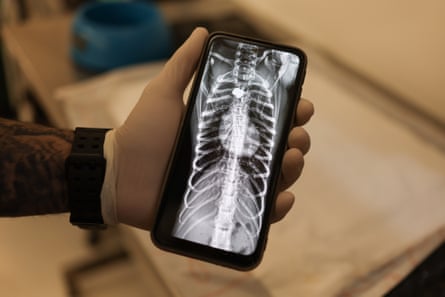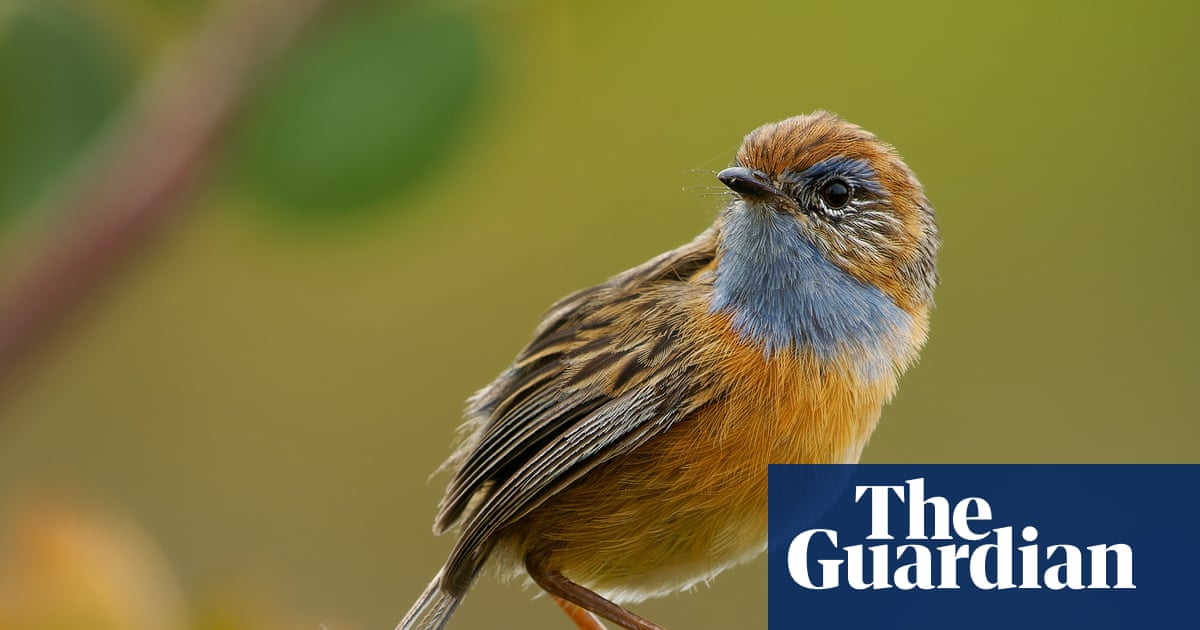PROTECT YOUR DNA WITH QUANTUM TECHNOLOGY
Orgo-Life the new way to the future Advertising by AdpathwayMaria was taking an afternoon stroll through one of Rio’s most desirable neighbourhoods when her life was turned on its head. When she was carried into a nearby clinic, unable to move her legs, doctors suspected she had been electrocuted or mauled by a dog.
The X-ray machine revealed a more sinister diagnosis: Maria had been shot, the bullet embedding itself in her spinal cord and leaving her paralysed from the abdomen down.
“She was in so much pain when she arrived,” recalled Lucas Rebelo, the medic tasked with trying to save her, as he stood by his patient’s bed.


Maria’s plight is tragically common in a city beset with gun crime, but for one detail: Maria is a capuchin monkey, one of dozens of animals who have been shot here in recent years.
“She’s a victim of urban violence,” said Roched Seba, the director of Rio’s Instituto Vida Livre (Free Life Institute) wildlife hospital and rescue center where Maria was taken earlier this month.
As Seba offered a tour of the institute’s headquarters by Rio’s Botanical Gardens, he said Maria’s shooting was symptomatic of a city blessed with a cornucopia of biodiversity – but cursed with rampant gun crime.
“It’s a portrait of Rio’s fauna and Rio’s conflicts,” said the 39-year-old activist whose home is one of the world’s most ecologically diverse urban environments but suffers devastating levels of armed violence.
According to Fogo Cruzado (Crossfire), a group which tracks gun violence, 816 people suffered firearm injuries in Rio in the first half of this year, nearly half them fatal. One hundred law enforcement officials and service members were shot.
Maria is far from the only wild animal Seba’s group has treated for gunshot wounds.
In a coop near Maria’s plastic bed was a black and white feathered mantled hawk that was shot in the wing earlier this year. Rebelo expected the bird to survive, “but he’ll never fly again … He’ll have to be kept in captivity,” he said as an elderly Tegu lizard loitered nearby and a recently rescued woodpecker nipped noisily at its cage.

According to Fogo Cruzado’s count at least 69 animals have been shot in Rio over the past decade. The victims include four capybara, three parrots, an alligator, a giant tortoise shot during a police chase and a dog called Phoenix who was hit during a police operation in the City of God favela. In March, a horse called Sugarfoot was wounded by a stray bullet during a police raid on heavily armed drug traffickers in another favela near the airport.
The actual number of shot animals is likely to be far higher. Within days two dogs were shot this month: a puppy called Nina, hit in the chest as police and traffickers exchanged fire, and another dog nicknamed Irajá who was reportedly shot deliberately in the foot by criminals irritated by his bark. “This has become really common,” Rio’s animal welfare secretary, Luiz Ramos Filho, told reporters. “Not even animals escape the extreme barbarity we’ve been living through.”



Seba’s vets have also treated numerous creatures not included in Fogo Cruzado’s tally, including vultures and owls. “People shoot them because they believe they are animals that bring bad luck,” he said, recalling one vulture that had been shot seven times.
Earlier this year another capuchin monkey – this time an adult male – was brought in after being hit by a projectile. “He died soon after we started treatment,” Seba said, lamenting how the “banalisation” of gun ownership – which boomed under Brazil’s pro-gun former president Jair Bolsonaro – had put animals in the line of fire.
“It’s not the animals who are in our city. We’re the ones who built a city in their forest. We’re just trying to repair a bit of the damage,” said Seba.


The institute has helped more than 15,000 animals since its creation a decade ago, some the victims of appalling cruelty. “I’ve seen so many awful cases. A boa constrictor that was beaten up … and had its head completely smashed to pieces … A sloth that was drugged and put in a backpack to be sold,” Seba said. One of the hospital’s rooms was filled with more than 600 yellow and brown shelled tortoises that environmental inspectors found stashed in the boot of a wildlife trafficker’s car.
A week after becoming Rio’s latest bullet-pierced primate, the outlook for Maria was grim.
“She’s stable. She’s medicated. She’s not in pain,” Rebelo explained as his team helped the monkey eat handfuls of mango and banana that she struggled to digest. “[But] there’s no chance of her being released [back into nature] – none at all,” the vet added of the convalescing capuchin.

Rebelo spoke softly to avoid further upsetting his visibly distressed patient, whose tiny hands trembled as a result of neurological damage caused by the slug in her spine. But there was palpable anger in the vet’s voice as he described Maria’s condition.
“Unfortunately, they’ve destroyed the life of a young animal who had her whole life ahead of her,” said Rebelo, who believed Maria was less than a year old and could have lived another 15. “She’s a female who would have been the mother of many other monkeys – and they put an end to her life for no reason at all.”
A few hours later, Maria was dead, passing away after being anaesthetized when vets tried to remove the projectile. “Our wild animals are exposed to the same violence and negligence as we are,” Seba wrote on Instagram beneath photographs of the monkey and the bullet that took her life.


 11 hours ago
1
11 hours ago
1





















 English (US) ·
English (US) ·  French (CA) ·
French (CA) ·